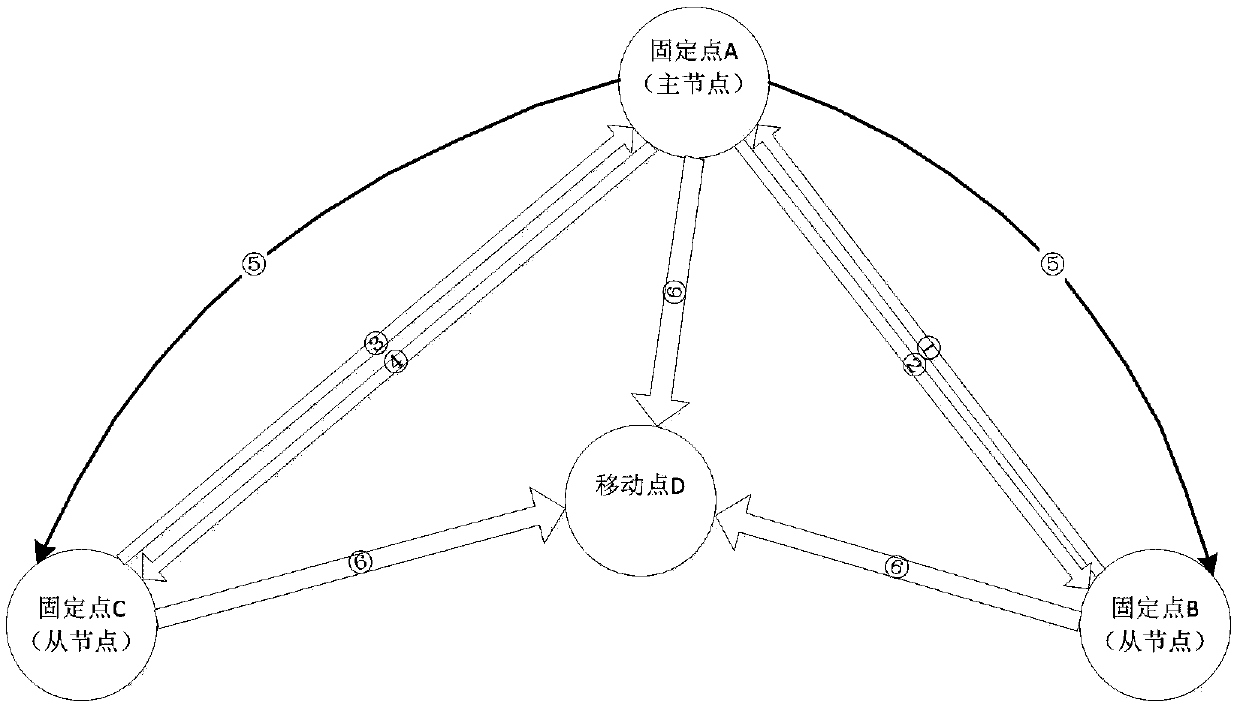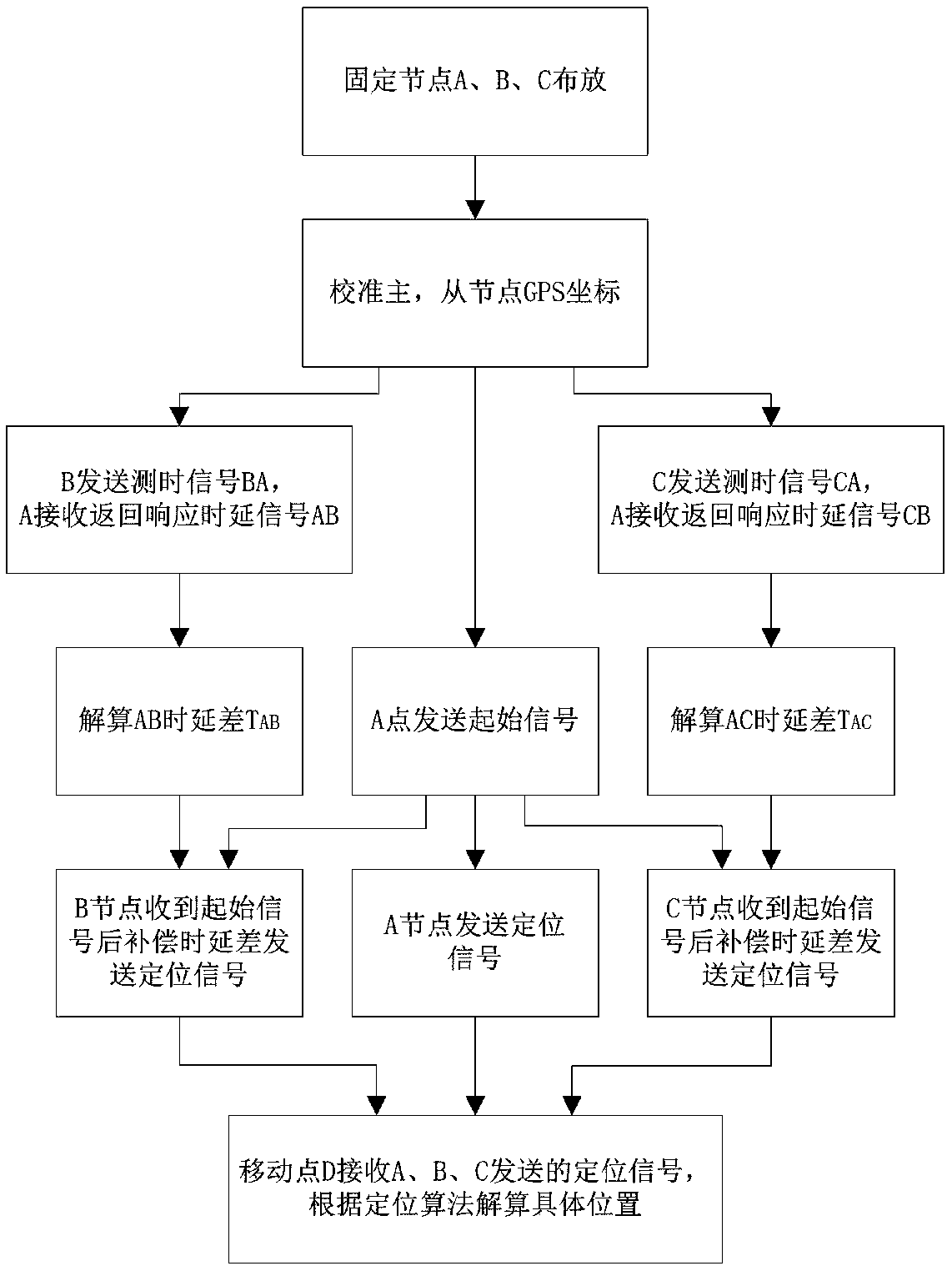Acoustic synchronization method in distributed underwater acoustic network passive positioning system
An underwater acoustic network and passive positioning technology, which is applied in time division multiplexing systems, positioning, radio wave measurement systems, etc., can solve the problems of positioning receiving time delay error and positioning accuracy decline, and improve receiving accuracy and cost Low, improve the effect of positioning results
- Summary
- Abstract
- Description
- Claims
- Application Information
AI Technical Summary
Problems solved by technology
Method used
Image
Examples
Embodiment 1
[0022] The purpose of the present invention is to provide a clock synchronization method in a communication network, aiming to solve the problem of positioning reception delay error caused by the clock error caused by clock crystal oscillator synchronization in the underwater Tongxi network, resulting in a decrease in positioning accuracy . The present invention proposes a method based on acoustic communication between network nodes, through the interaction between network nodes of a certain protocol to realize synchronous transmission of positioning signals between networks. This project is called acoustic synchronization.
[0023] The method of acoustic synchronization is to determine the acoustic propagation delay between fixed nodes during the acoustic communication process between fixed nodes, and calculate the communication delay difference between each node through the communication between the fixed node and each sub-node. Then take a fixed node as the reference point,...
Embodiment 2
[0029] A distributed underwater acoustic positioning system according to an embodiment of the present invention can be divided into fixed nodes and mobile nodes to be positioned.
[0030] Such as figure 1 As shown, the fixed node is further divided into a master node A and at least two slave nodes B and C, which are used to locate the underwater mobile node D.
[0031] Step 1: Before the system starts working, when deploying fixed nodes A, B, and C, first use GPS equipment to record the GPS latitude and longitude of each fixed node;
[0032] Step 2: Sound velocity measurement process: Send signals to nodes B and C in sequence between fixed points, measure the sound propagation time from the sub-node itself to the master node, and calculate the distance from each slave node to the master node according to the sound propagation time and the distance obtained in step 1 The sound velocity value of the node;
[0033] Step 3: Delay measurement process: Node A enters a standby stat...
PUM
 Login to View More
Login to View More Abstract
Description
Claims
Application Information
 Login to View More
Login to View More - R&D
- Intellectual Property
- Life Sciences
- Materials
- Tech Scout
- Unparalleled Data Quality
- Higher Quality Content
- 60% Fewer Hallucinations
Browse by: Latest US Patents, China's latest patents, Technical Efficacy Thesaurus, Application Domain, Technology Topic, Popular Technical Reports.
© 2025 PatSnap. All rights reserved.Legal|Privacy policy|Modern Slavery Act Transparency Statement|Sitemap|About US| Contact US: help@patsnap.com



